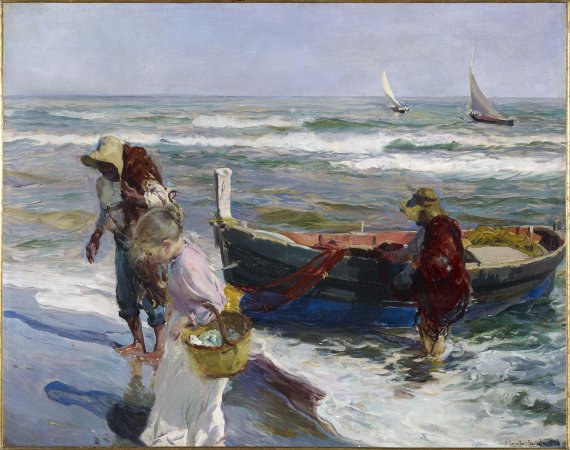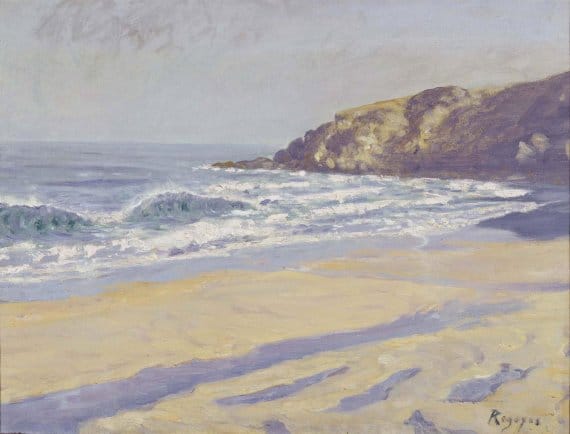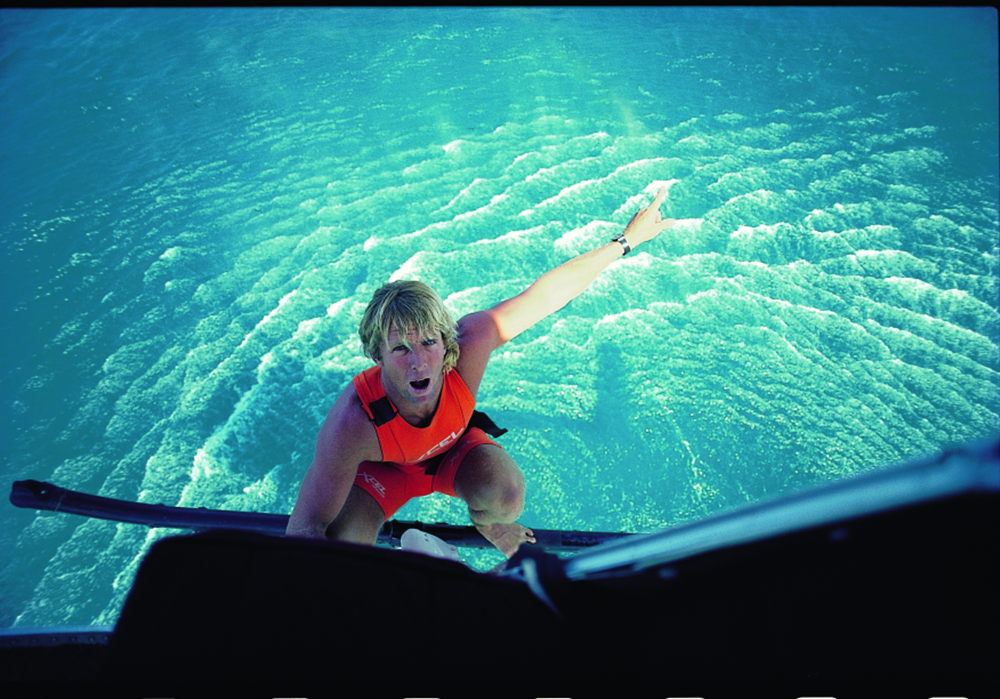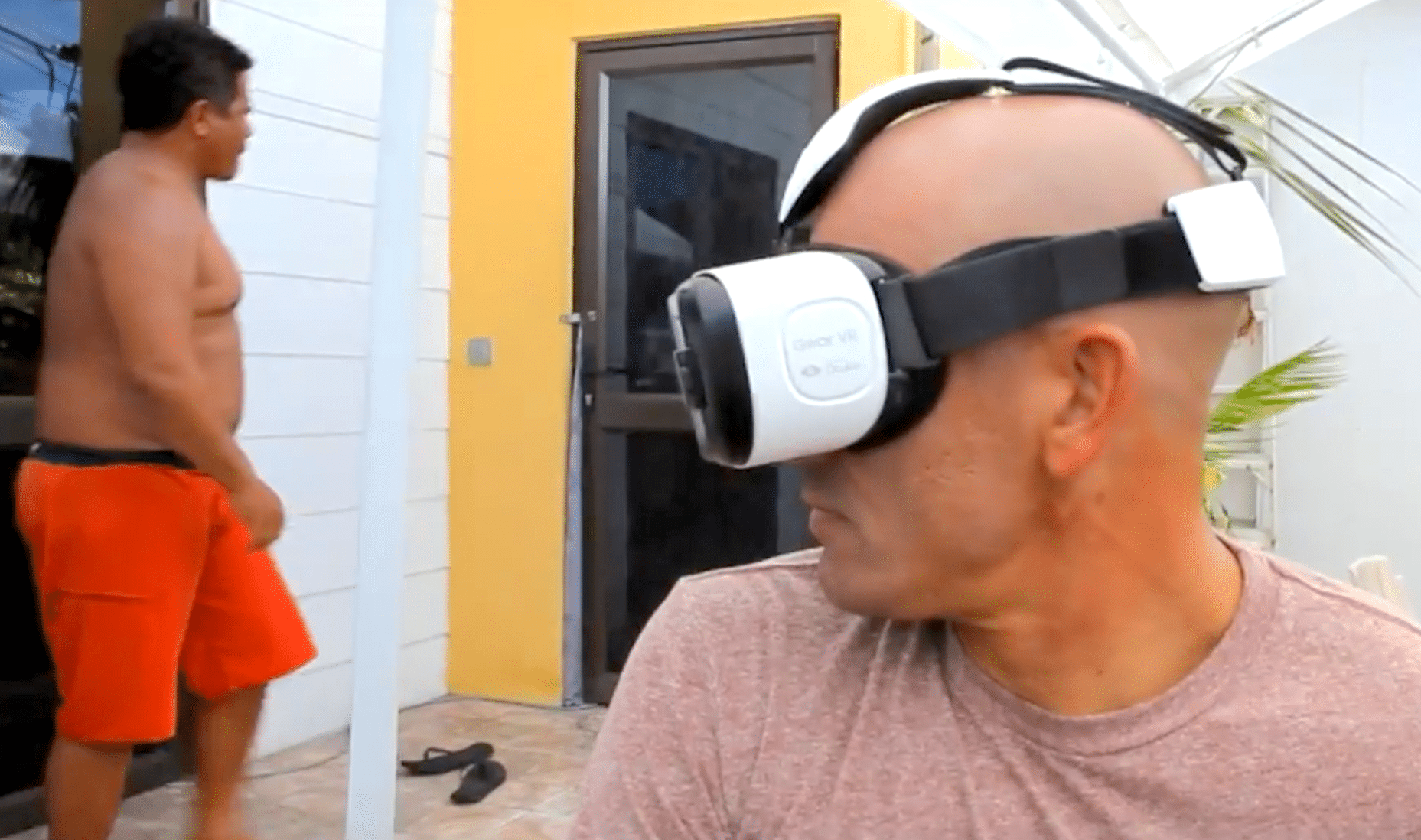A high-culture romp through nineteenth-and twentieth-century art history… for surfers.
As realists and romantics appreciative of aesthetics, no surf media audience is as astute and learned as that which congregates here at BeachGrit. Case in point? Mariano Landa’s transatlantic high-culture romp through nineteenth-and twentieth-century art history… for surfers.
5. Josep de Togores (Cataluña), Couple on the Beach (1922)

Every surfer who’s filled a passport or two knows that only one surf trip happening is as memorable as scoring bombing waves halfway across the world: that raunchy tryst with a total stranger after the swell dies down. Son of the President of the Barcelona Association of Football Clubs (later FC Barcelona), Togores uses a neutral palette to capture the essence of such an encounter, embodied by our lady — is she a French ripper? — whose round curves complement the bronzed brawn of her surfed-out lover. The flatness of the waves reminds the viewer, “Everything has a time and a place. Don’t be that guy who misses the swell trying to find a fuck.”
4. Joaquín Sorolla i Bastida (Valencia), The Arrival of the Catch (1889)

Orphaned at two years old, the post-impressionist Spaniard Sorolla knew a rippable little left when he saw one. The stiff sails in the background indicate that there’s a nice little side-onshore air wind running, the fishermen’s bare feet tell us that the water’s trunkable, and the left off the banks looks apt for two pumps and a jump. The young girl’s dismissal of the surf, perhaps turned off by the breeze, causes her father to comment, “Honey, it’s better than it looks out the back. Be glad you don’t live in Florida.”
3. Darío de Regoyos (Spain)– The Basque Coast, Morning (1895)

A century before the WSL even thought of a European leg for the tour, Regoyos was dropping clues as to the temperamental nature of the waves in the Bay of Biscay. The heaving shorebreak barrel is deceiving. As the headland provides scale, it’s bigger than it looks, and the left seems the natural option: it’s overhead for sure. But seeing the left clamp as it runs into the corner, the viewer thinks, “If only there was more west in the swell, the point might be firing!”
2. Daniel Vázquez Díaz (Spain) – The Sea (1908-1914)

Vázquez reminds us that everything is derivative. Acclaimed as a rip-off of his Golden Age predecessor Zurburán, DVD was more Kai Otton than Kelly Slater. But he brings us into the fore of our present debates of surf and sex. What you don’t see is that the two naked dudes — literally riding bareback — have stashed their fresh 28L Sharp Eye’s in the bushes before crossing the rivermouth for a surf check. As the seated figure leans back to get a better angle on the swell filling into the right, his rippled back reminds us that he’s not posing for you or for me, he’s posing for himself. “We’re out there,” cries his companion.
“More horses,” cries a Roxy ad exec.
1. Ignacio Merino (Peru/France): Pizarro Taking Possession of the Pacific in the Name of the Spanish Monarchs (1850)

Merino was a true G. Born to parents so wealthy that they make Dane’s contract look like pocket change, he grew up within a stone’s throw of those famous Peruvian pointbreaks between Piura and Trujillo before being educated in France, rubbing elbows with big guns like Franky Goya, Eugéne Delacroix, and Paul Delaroche. After a back-and-forth between Lima and Paris, he pumped out this image of a disputed conquistador— Pizarro or Balboa —who throws a claim worthy of imitation by any competitive surfer or layman barrel-dodger. Chucking caution to the wind in a shorebreak that looks worthy of a WSL contest, his costumage reminds us just how far back retro-revivals can still go.










